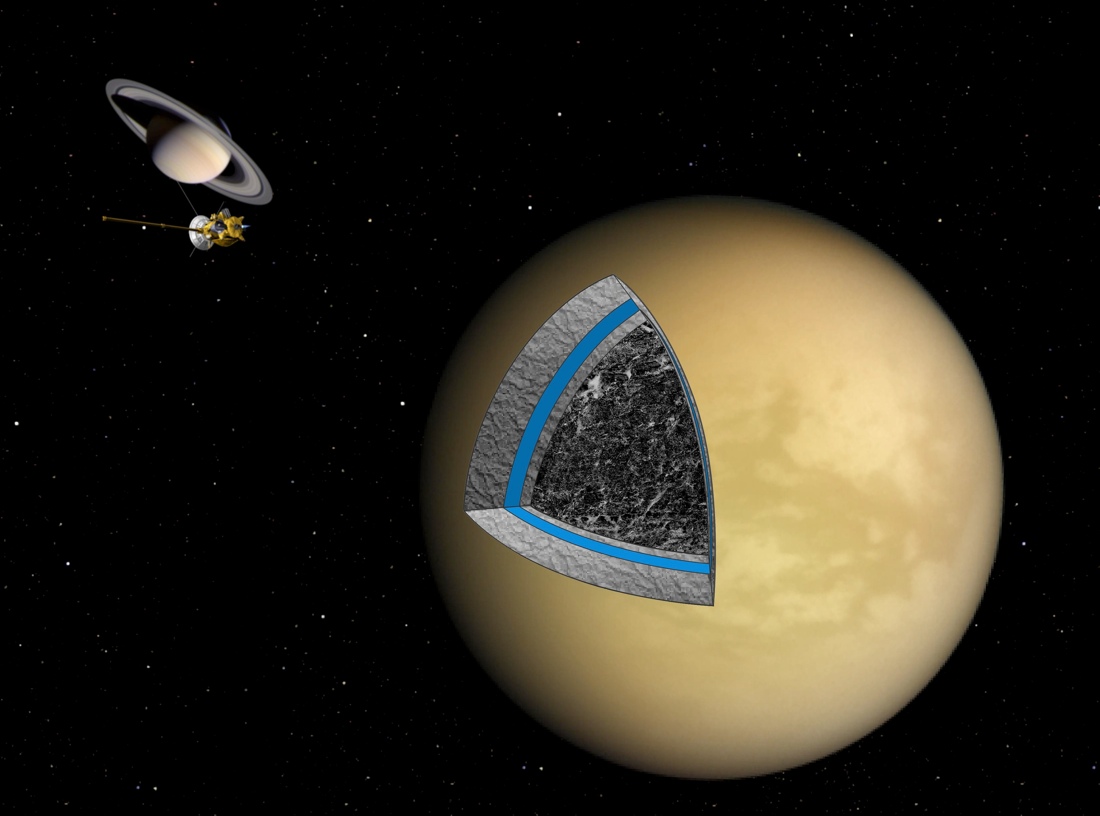In Photos: Stunning Views of Titan from Cassini
Titan interior

Gravity-field data collected by Cassini instruments suggest Titan's interior is a chilly mix of ice studded with rock, though it seems the outermost shell of Titan (down to about 300 miles or 500 km) is devoid of any rock. The layers in the Titan artist's illustration show the moon's hazy surface (yellow), an ice layer starting near the surface (light gray), a possible internal ocean (blue), another layer of ice (light gray) and a mix fo rock and ice in the interior (dark gray).
Sign up for the Live Science daily newsletter now
Get the world’s most fascinating discoveries delivered straight to your inbox.
Jeanna Bryner is managing editor of Scientific American. Previously she was editor in chief of Live Science and, prior to that, an editor at Scholastic's Science World magazine. Bryner has an English degree from Salisbury University, a master's degree in biogeochemistry and environmental sciences from the University of Maryland and a graduate science journalism degree from New York University. She has worked as a biologist in Florida, where she monitored wetlands and did field surveys for endangered species, including the gorgeous Florida Scrub Jay. She also received an ocean sciences journalism fellowship from the Woods Hole Oceanographic Institution. She is a firm believer that science is for everyone and that just about everything can be viewed through the lens of science.









